The Story of Pyramid Solitaire: From Ancient Shapes to Digital Screens
Anna | April 9, 2025
Solitaire, in the broad sense, refers to a collection of single-player card games that involve arranging or merging cards in a particular pattern with the goal of clearing the layout. These games date back several centuries and were historically referred to by different names such as "Patience" in many parts of Europe. Over time, hundreds of variants have appeared, each with its own style and challenge. Among these games, one stands out with its eye-catching pyramid layout. Let's take a closer look at its history and how it evolved.
The First Signs of Pyramid Solitaire
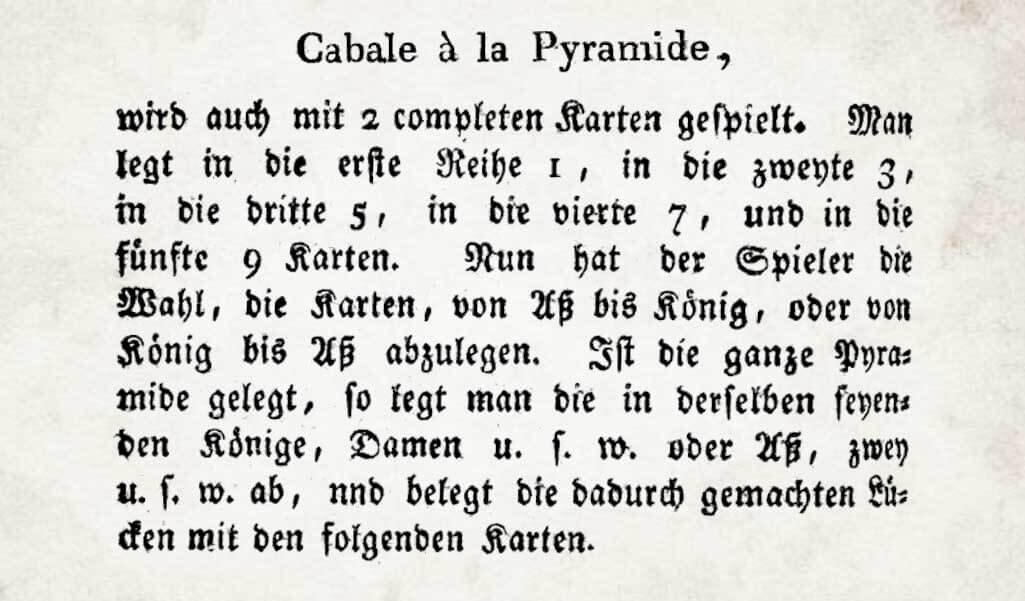
The idea of stacking cards in a pyramid isn’t new. In fact, one of the earliest known references to a pyramid style card game dates all the way back to 1808 in a German book called “Neue Königliche L’Hombre.” The book describes a game called “Cabale à la Pyramide.” This wasn’t quite Pyramid Solitaire as we know it today but the concept of laying out cards in a triangular formation had already taken root.
That Magic Number: 13
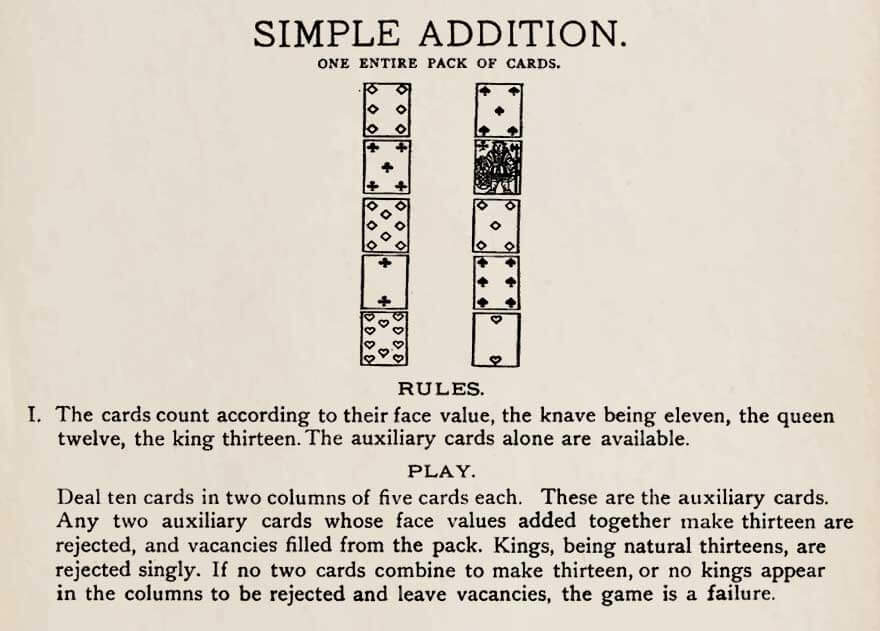
If you ever have played Pyramid Solitaire you know that the main goal is to match pairs of cards that add up to 13. Turns out, that idea has been floating around for quite a while. In “Dick’s Games of Patience” (1898), writer Harris B. Dick described a game called Simple Addition where the objective was to pair cards to reach a certain sum… 13. Sound familiar?
While Simple Addition had a different setup, using two columns of cards instead of a pyramid, the core mechanic was the same: find pairs that total 13 and remove them.
American Twists and Early Variations
By the early 1900s, Pyramid Solitaire was beginning to take form. American card game books introduced different versions of pyramid-style games under names like Elizabeth’s Solitaire and Pile of Twenty-Eight. Each of these had its own rules, but the common elements, pyramid-shaped layouts and mathematical pairing, were creeping closer to the game we know today.
These early versions were experiments, blending old European patience games with new American twists. Eventually, one version would rise above the rest and become the Pyramid Solitaire we recognize today.
Albert Hodges and the Modern Pyramid
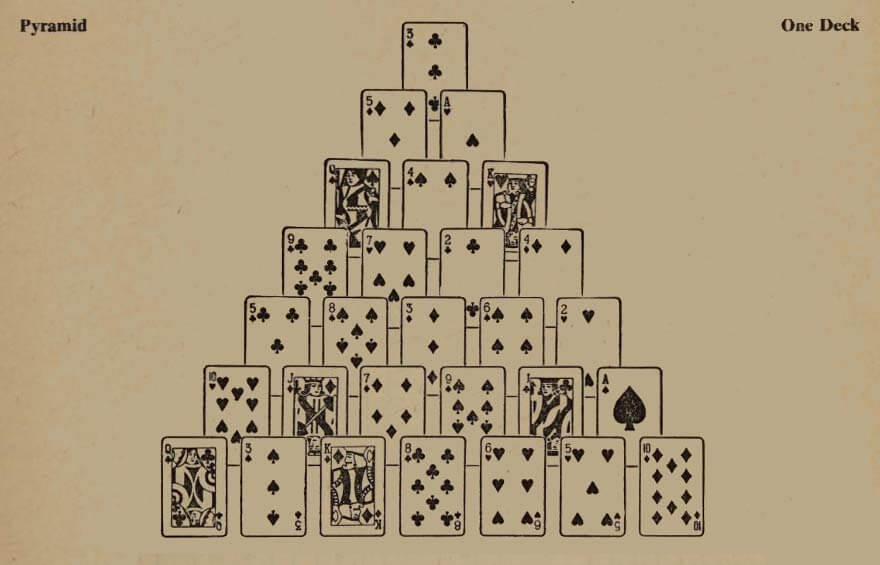
If anyone deserves credit for establishing Pyramid Solitaire as a structured game, it’s Albert Hodges. In 1949 he published “The Complete Book of Solitaire and Patience Games” which outlined a formal set of rules for Pyramid Solitaire. This version introduced a more complex and strategic setup, including the pyramid layout, stockpile, waste pile, and a scoring system.
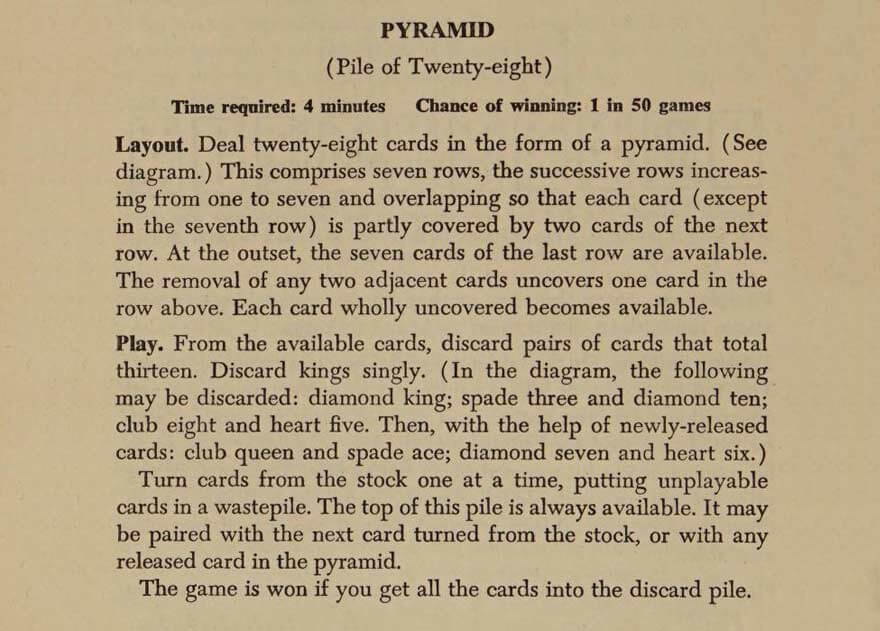
Compared to earlier versions, Pyramid Solitaire became more dynamic and replayable, standing apart from simpler and luck-based games like Simple Addition. Hodges’s book gave it a widely accepted format, helping it transition from scattered variations into an official game with clear rules.
Despite this formalization, Pyramid Solitaire didn’t immediately explode in popularity. The mid-20th century saw a decline in patience games as television became the new household distraction. But like a card buried under a pyramid, Pyramid Solitaire was just waiting for its moment to re-emerge.
The Microsoft Effect: How Computers Saved Solitaire
In 1990, Solitaire made a major comeback but this was not because of Pyramid. Microsoft’s release of Windows 3.0 introduced Klondike Solitaire as a built-in game. What was originally meant as a way to teach people how to use a computer mouse quickly became one of the most played digital games in history.
Seeing the success of Klondike, Microsoft decided to add more solitaire variations to its software. And that’s where Pyramid Solitaire finally got its shot.
Tut’s Tomb: Pyramid Solitaire Goes Digital
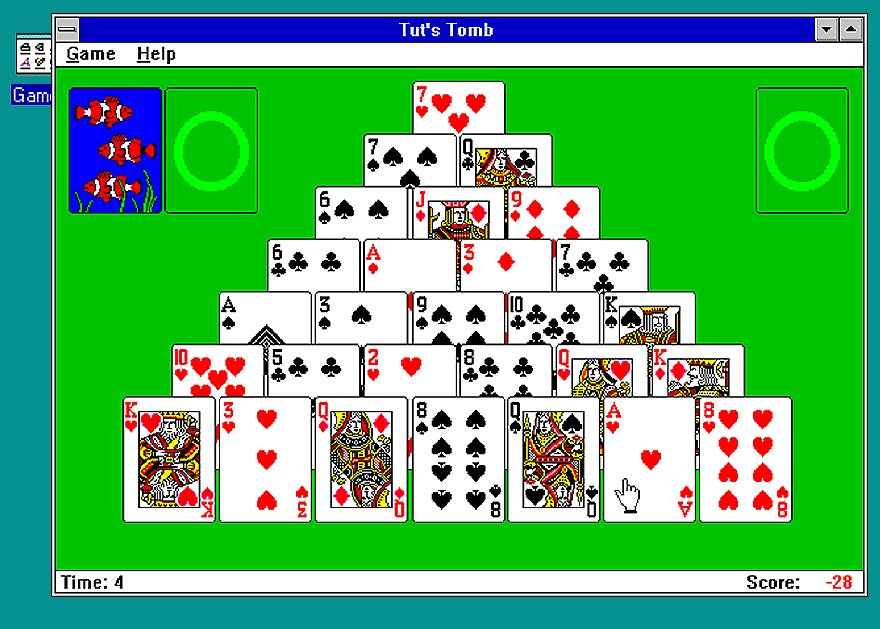
Rick LaPlante, a developer working on the Microsoft Entertainment Pack 2 (released in 1991), had a mission: to create a new card game for Windows users. He took the mechanics of Pyramid Solitaire from Albert Hodges' book and gave it an Egyptian-themed name: Tut’s Tomb.
While FreeCell, another game in the same pack, became a global sensation, Tut’s Tomb remained a bit of a niche title. But it still introduced thousands of players to the mechanics of Pyramid Solitaire and helped keep it alive in the digital world.
Pyramid Solitaire Today
Since its quiet debut in Microsoft’s Entertainment Pack, the game has held a steady spot among solitaire games. While not as popular as Klondike, Spider or FreeCell, it remains a favorite, available on computers, mobile apps and our website FreeSolitaire.com. Some versions stick to tradition, while others add fresh twists, but at its core, it’s always about matching pairs to 13.
What makes it special? A mix of simple math, strategic planning and that classic pyramid layout. It may not be the most famous solitaire game, but its blend of challenge and timeless appeal keeps players coming back. Whether using a real deck or tapping on a screen, Pyramid Solitaire proves that great games never fade… they just wait for their time to shine.
